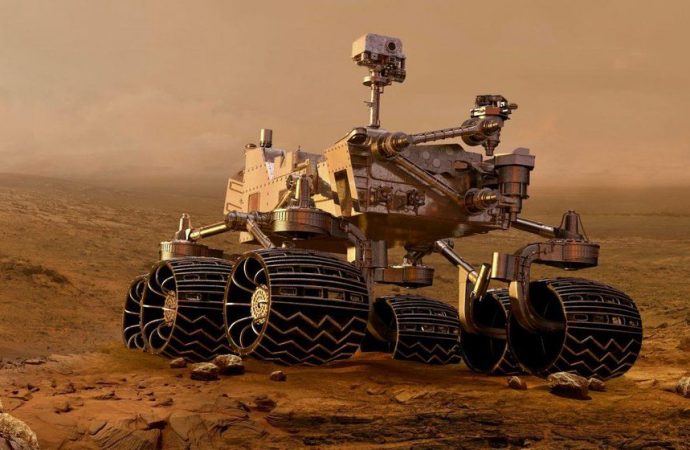NASA’s Curiosity rover found a sudden large release of greenhouse gas emissions on Mars. As a result, NASA scientists are modifying their planned schedule to investigate the source of the greenhouse gas.
Source: Forbes
Scientists are especially interested in the release because methane gas is often associated with biological processes on Earth. However, at this point, it is unclear if the methane gas release is due to a geological or biological source.
On Earth, microbial degradation of organic matter can result in the release of methane emissions (called methanogenesis). In addition, methane is known to occur during geothermal processes.
Methanogenesis is a form of creating energy that anaerobic microbes can use. When oxygen doesn’t exist certain bacteria and microbes find a way to make energy in the anaerobic (without oxygen) conditions. Unlike animals that use oxygen to respire, methanogenic microbes use either carbon dioxide or acetic acid to produce energy. CO 2 + 4 H 2 → CH 4 + 2 H 2O CH 3COOH → CH 4 + CO 2
In the two equations above, methanogenic microbes can use carbon dioxide and hydrogen or acetic acid to produce energy. The byproducts are either methane (CH4) and water or methane and carbon dioxide. This is why scientists are excited as a key source of methane in Earth’s atmosphere is through the anaerobic respiration above.
Another key factor is that methane is fairly unstable and doesn’t linger for more than a few centuries before it is broken down by solar radiation. While a few centuries is a long time for humans, for geological processes it is a blink of an eye. This means within the last few centuries something must have released methane gas into the Martian atmosphere.
At this point, NASA’s Goddard Spaceflight Center scientists are investigating whether it is biological or geological in source, however, to do so requires precise measurements of isotopic ratios.
Was this greenhouse gas emission from microbes living on Mars? At this point it is unclear. Curiosity has detected methane in the past but never at this high of a reading. In June of 2013 Curiosity measured a spike in methane above an ice sheet nearby Gale Crater, which lingered for a couple of months then dissipated.
While life on Mars has never been found, this is a positive recent finding and could be the result of past or current microbial life on Mars.
The Curiosity mission controllers changed plans to further investigate the methane readings. It is thought that Mars could have hosted life 4 billion plus years ago when it was warmer and wetter than today. As the planet cooled microbial communities could have burrowed deeper into Mars’ crust in order to maintain a warmer environment. This could be a sign of an underground microbial community “burping” methane into the Martian atmosphere, an indelible hint of life.

































Leave a Comment
You must be logged in to post a comment.